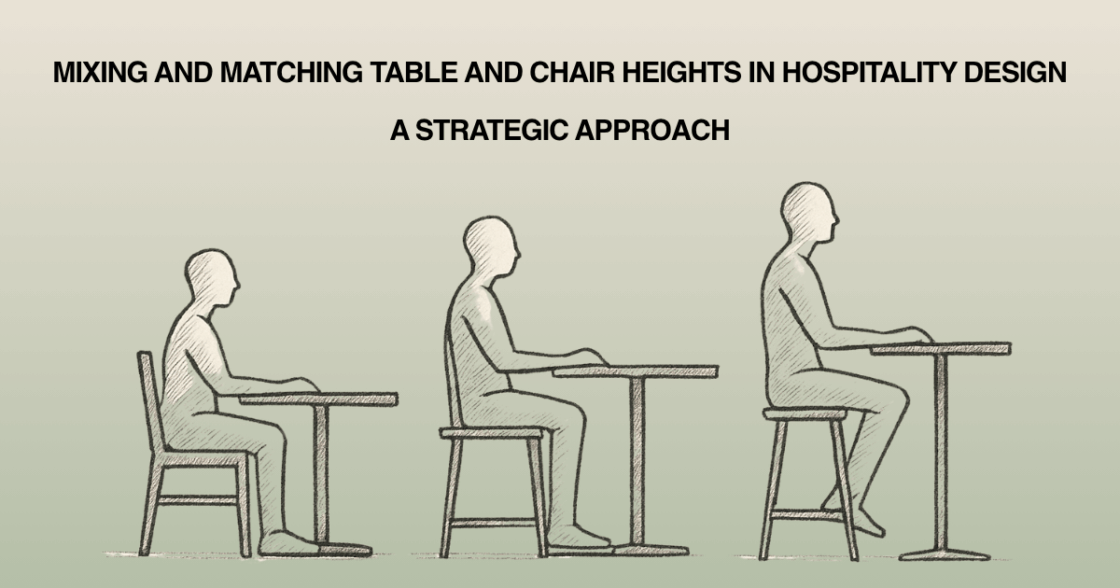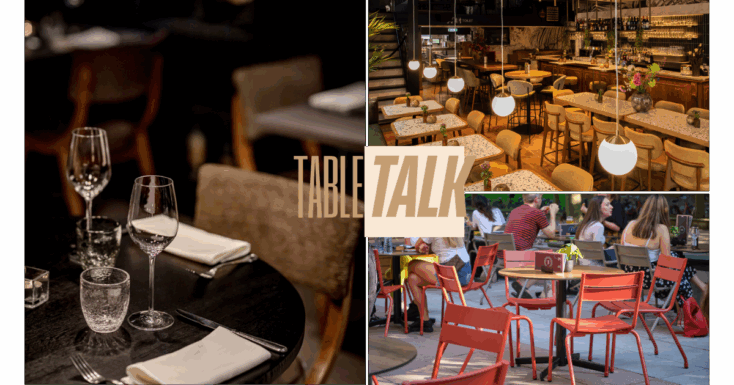In the evolving world of hospitality design, success is measured not just by looks, but by how effectively a space performs. For hospitality operators, designers, and specifiers, mixing and matching table and chair heights is a powerful way to maximise space, improve flow, and elevate guest experience.
Whether you’re fitting out a hotel lobby, restaurant, bar, or café, varied seating heights create flexible, engaging, and future-proof environments. Here’s how this design strategy supports better results across hospitality sectors.
1. Zone Your Space Without Structural Dividers
Introducing multiple seating heights such as low, standard, counter, and bar, lets you define distinct areas within open spaces. Lounge height furniture creates relaxed zones for waiting or informal meetings. Bar height tables are ideal for quick drinks or casual interaction. The result? More purposeful layouts without the need for permanent barriers.
2. Improve Guest Flow and Spatial Efficiency
Varying table heights encourages different types of guest behaviour. Standard height tables support extended dining, while poseur tables promote shorter, social stays. This allows better traffic flow, natural wayfinding, and more efficient service, all critical in fast-paced hospitality settings.
3. Increase Versatility for Multi-Use Spaces
From hotel lounges to hybrid bars, many hospitality spaces now serve multiple functions throughout the day. Layering furniture heights makes transitions seamless. Think: morning coffee at a low communal table, followed by evening cocktails at a bar height perch. The same square footage, multiple revenue streams.
4. Build a Stronger Brand Identity
Visually, contrasting heights add rhythm and depth to a room, enhancing the brand story. When used strategically, varied seating reinforces design themes and makes spaces more memorable, and more shareable on social media. It’s a subtle but effective way to stand out in a crowded market.
5. Cater to a Wider Range of Guests
No two guests are the same. Offering a variety of table and chair heights improves accessibility and comfort, especially for people with mobility needs. Hospitality furniture should be inclusive without compromising on aesthetics, and this approach helps deliver that balance.
Final Thoughts: Get the Balance Right
Mixing table and chair heights in hospitality environments isn’t just a trend, it’s smart design. The key is in considered planning. We collaborate with architects, designers, and operators to deliver tailored, contract quality furniture solutions that meet functional and visual goals.
Planning a new hospitality fitout?
Speak to our expert team today to discuss layered seating strategies that elevate guest experience at every level. You can drop us an email to info@satelliet.co.uk and let us know about your next project.



